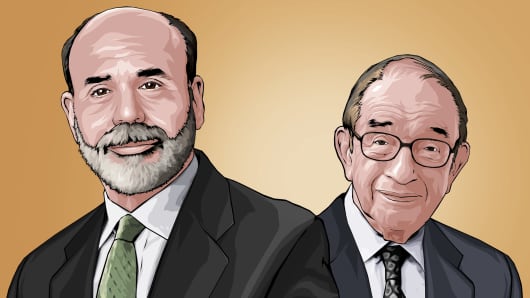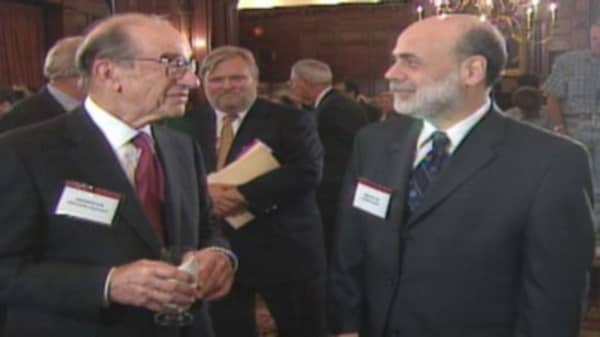Former Chairman, U.S. Federal Reserve
Born: March 6, 1926, New York City (Greenspan); Dec. 13, 1953, Augusta, Ga. (Bernanke)
Education: Bachelor's, master's and Ph.D. in economics, New York University (Greenspan); bachelor's and master's in economics, Harvard University, and Ph.D. in economics, Massachusetts Institute of Technology (Bernanke)
No public official has a greater effect on the U.S. economy than the chair of the Federal Reserve. Just two men have occupied that position for all but a few months of the past 25 years. We pair them on our anniversary list of the 25 most transformative leaders, icons and rebels of the past quarter-century because of that historical arc and because, while both are eminent in their own right, it is impossible to separate their influence from their roles as heads of the U.S. central bank.
Their tenures are almost neatly separated by the 2008 global financial crisis. Ben Bernanke took over from Alan Greenspan in February 2006. Like his predecessor, Bernanke came from chairing the Council of Economic Advisors although, unlike Greenspan, he had served as a Fed governor. The two men's tenures would be colored by their earlier careers: Greenspan's in the private sector, Bernanke's as an academic, notably at Princeton University.









































